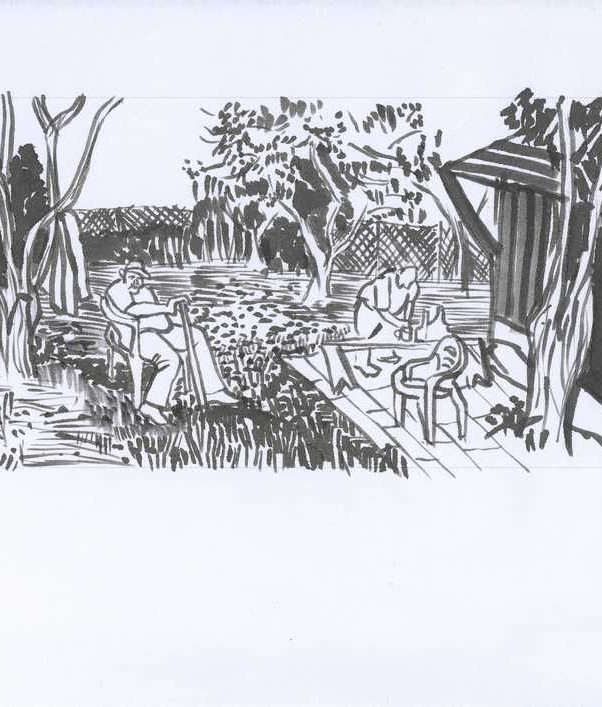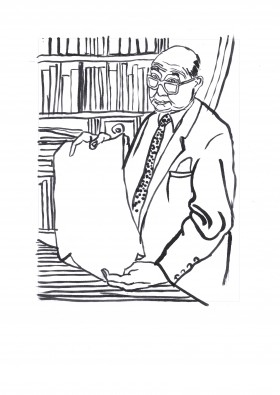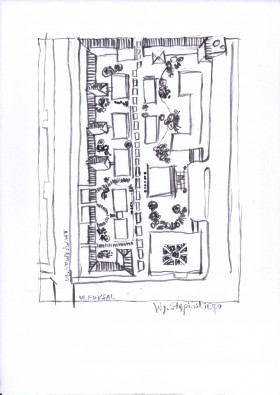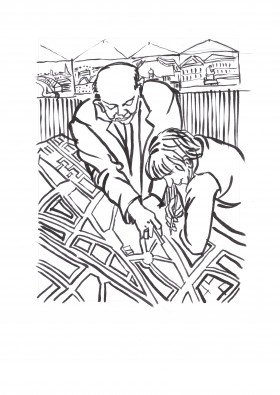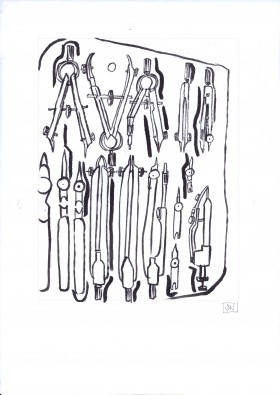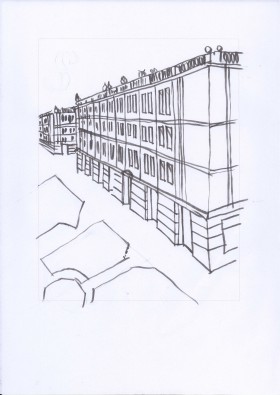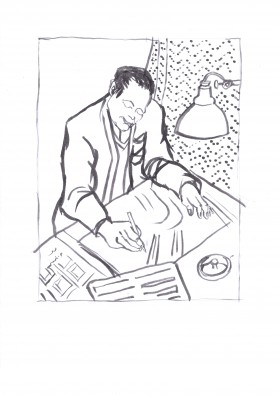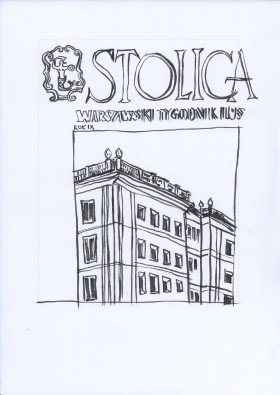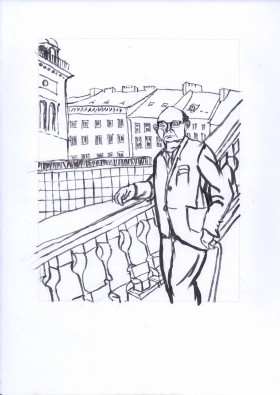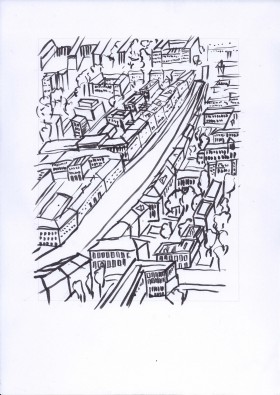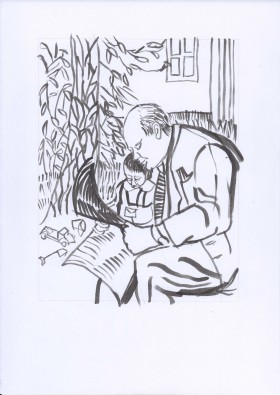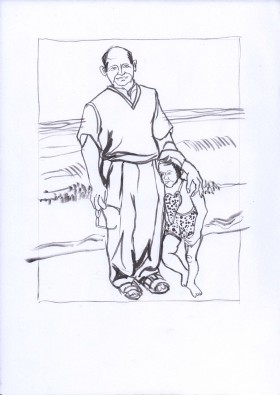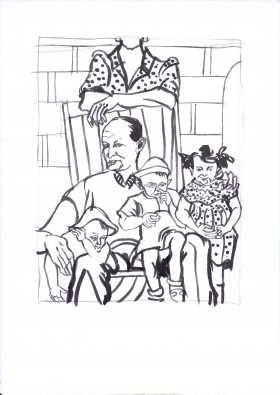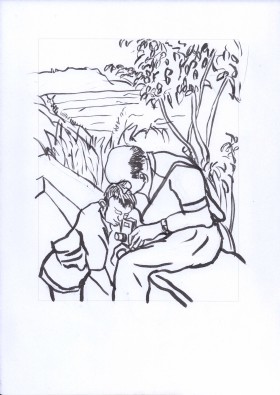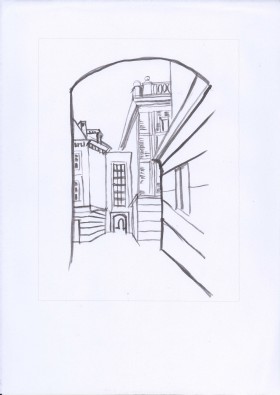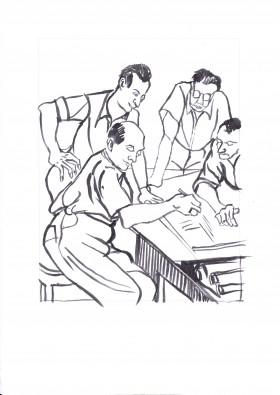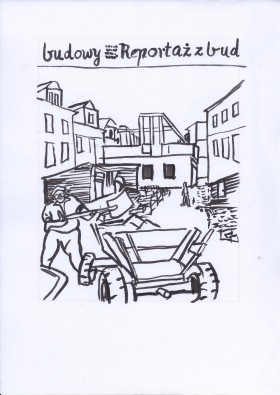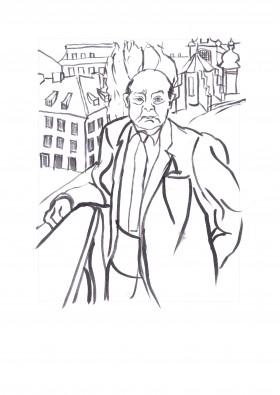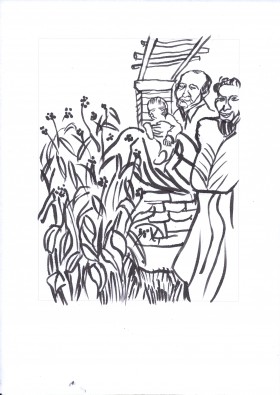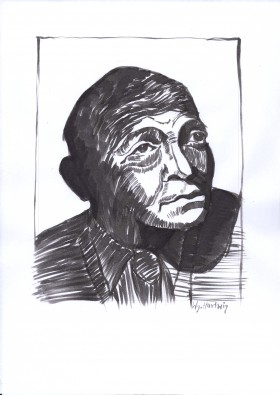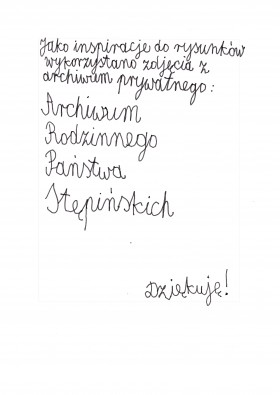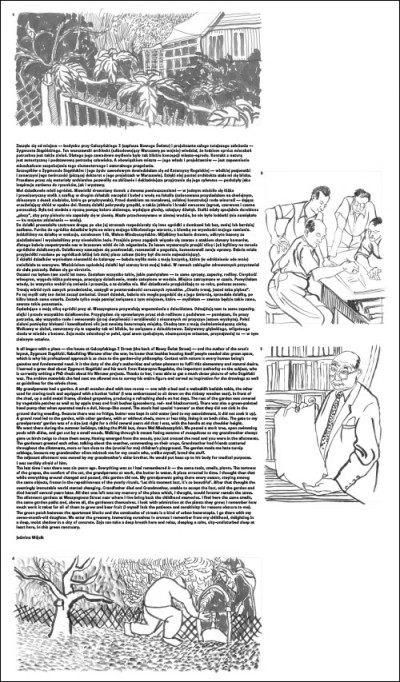The artist tackles the subject of various approaches to the issue of urban greenery and of citizens’ struggle for the full right to enjoy it. The result is a personal narrative, centred around the artist’s grandparents, presented in the form of a series of small-format paper drawings, entitled The Allotment Garden. Wójcik is a great draughtswoman, combining a keen sense of observation with an ability to synthetically present the subject; the series includes representations of allotment-garden scenes remembered from childhood as well as images related to that specific form of grassroots urban-space human activity that is gardening. But The Allotment Garden series offers more than just genre drawing; it attempts to present a psychological portrait of a specific social group. The childhood as a period of primeval happiness, the garden as a potential realisation of the ideal of idyllic living in a highly individualised form.
The allotments often occupy the strangest fragments of urban space, so why should they not be included in the space of art? Besides presenting drawings, Wójcik has also arranged an actual garden. The luminous object visible through the gallery’s windows turns out to be a greenhouse in which germinate, grow, bloom and bear fruit various useful plants. But the artist has not limited herself to creating a visually attractive object or transferring a piece of ‘real life’ to the gallery, for she has invited the viewers to help co-creating the ephemeral garden — anyone willing to tend for a plant. If they manage to keep it alive throughout the show or wait to see a crop, they will be able to take it home with themselves. Viewer interaction and experience sharing feature high on the artist’s agenda. We hope these postulates resound fully during the exhibition.
The Allotment Garden is coupled with a drawing series called Zygmunt Stępiński in which Wójcik deals with another aspect of urban greenery, taking as her point of departure the Zachęta Project Space’s immediate environment — the Nowy Świat East built-up and green area designed after the Second World War by architect Zygmunt Stępiński. Wójcik has researched the project’s documentation as well as photographs from the Stępiński family archive, resulting in a series of drawings in which portraits of the architect at work, with team-mates intermingle with representations of the designs or actual views of his Warsaw projects. Today little remains of the Nowy Świat East original layout and Wójcik’s drawings serve as a kind of tribute to the work and thought of the, somewhat forgotten today, architect.
In the gallery’s underground section Jaśmina Wójcik has arranged a sanctuary for reflecting on the beauty of nature. By courtesy of audio-aromatic mixtures, sensual natural extracts prepared by the artist, the viewer will be able to forget about the city noise.
Issues of urban greenery or bio-guerrilla feature frequently in the work of younger artists. Jaśmina Wójcik’s project goes a bit farther, trying to attract the usual gallery non-goers by presenting gardening as a kind of artistic practice. Raising the important issue of the need for balancing the proportion of built-up and green areas in the modern city is an extra value here.
